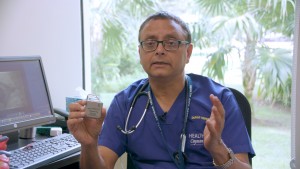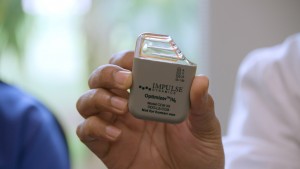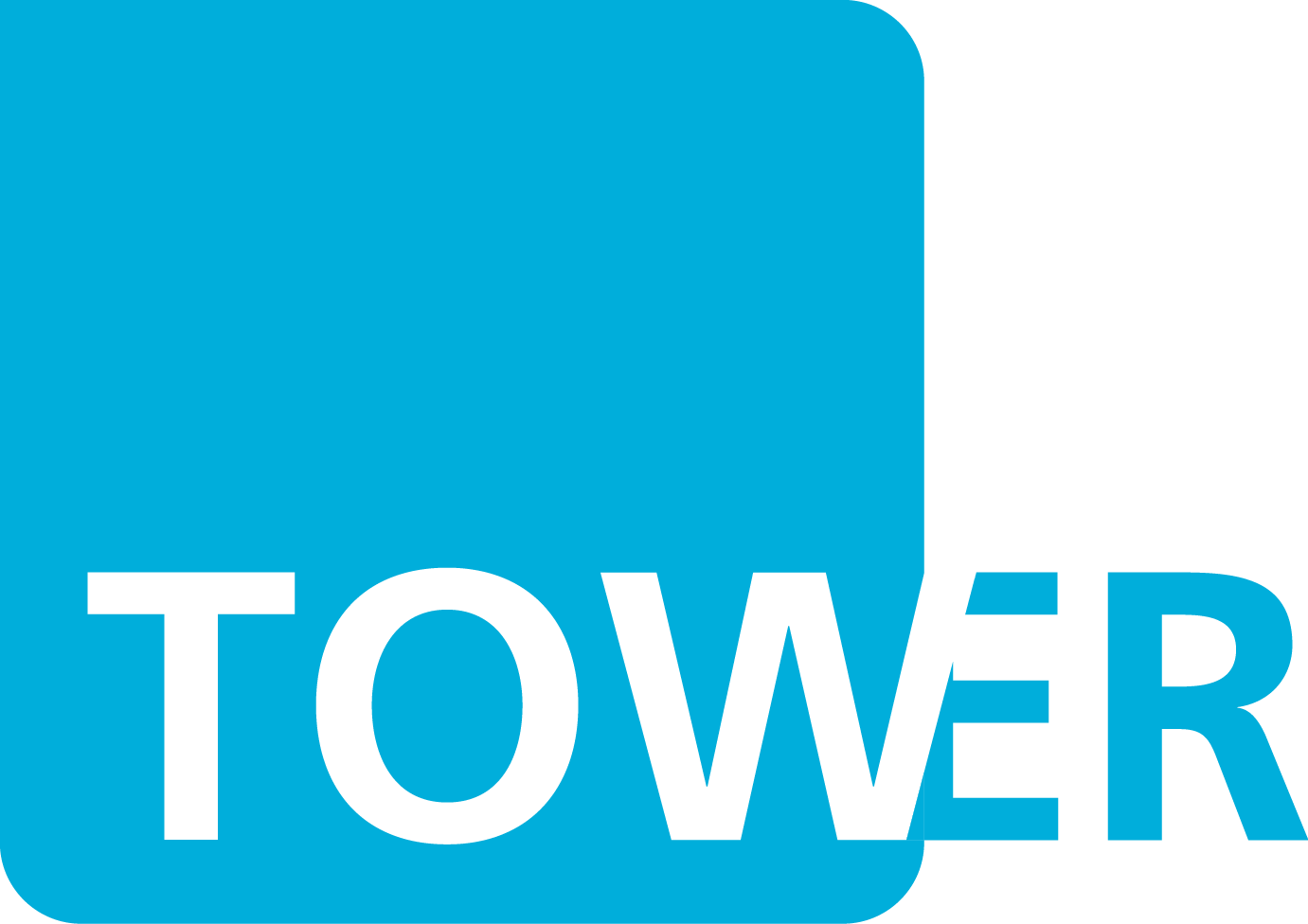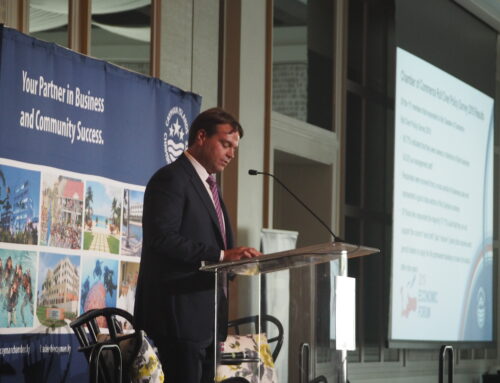 For the first time in the Caribbean, Central and South America, Dr. Ravi Kishore, Chief Interventional Cardiologist and Electrophysiologist at Health City Cayman Islands, has implanted a Cardiac Contractility Modulation (CCM) device to treat heart failure in a Cayman Islands resident.
For the first time in the Caribbean, Central and South America, Dr. Ravi Kishore, Chief Interventional Cardiologist and Electrophysiologist at Health City Cayman Islands, has implanted a Cardiac Contractility Modulation (CCM) device to treat heart failure in a Cayman Islands resident.
Dr. Kishore implanted the device in late August, thereby making medical history in the region.
“What we are proud of is, this is the first time we have introduced this device in the entire Caribbean, and even in the US it’s an investigational device so it’s not routinely implanted in patients in the US and none of them have been implanted in Central America and South America. In that sense, I think we have introduced yet another novel therapy in the region,” Dr. Kishore said.
The device used is the Optimizer IVs Active Implantable Pulse Generator (IPG) by Impulse Dynamics, intended for the treatment of heart failure through delivery of CCM signals.
CCM device implantation is currently conducted only on an investigational basis in the United States, however CCM devices are approved and available for clinical use in all European Union countries and in Australia, Turkey, India and Hong Kong. While CCM therapy is not approved for clinical use in the United States, a study has been initiated in order to obtain FDA approval.
“We are very happy in introducing a new device for our patients in the Cayman Islands…This is specifically used in patients with congestive heart failure where the heart pumping function has come down in spite of medications,” Dr. Kishore said.
He explained how CCM therapy works: “The CCM device functions by giving non-contractile stimuli to the heart. It modulates the metabolism of the heart in such a way that its contractile function improves.”
In contrast to other electrical stimulation treatments for heart failure, such as pacemaker therapy or implantable cardioverter defibrillators (ICD), CCM does not affect the cardiac rhythm directly. Rather, the aim is to enhance the heart’s natural contraction sustainably over long periods of time.
“One of the traditional methods for this has been what is called cardiac resynchronization therapy where we implant a special pacemaker which kind of normalizes the conduction abnormality in the heart. All patients are not eligible for this, it depends on what the shape of the ECG is like, and in some patients where the ECG does not allow a beneficial impact because of CRT we need to look at alternative options,” Dr. Kishore explained.
Approximately between 60-70 per cent of patients are not eligible for traditional CRT, and are therefore potential candidates for CCM therapy.
Dr. Kishore said, “We had one such eligible patient who had to have recurrent hospital admissions despite medications. His pumping function had come down to something like 25 per cent to 30 per cent, normal is 60 per cent. By doing this particular device he is showing a remarkable improvement, just at two weeks after implant.”
Patient Howard Vernon described the symptoms that brought him to Health City: “I became sick, I started to become short of breath, I noticed that things I used to do, it would take a little bit more time or I would get tired quicker.”
However, soon after the CCM device was implanted, Vernon noticed great improvement: “Everything has been great since day one with them, and even after the surgery. For sure, not short of breath since the surgery. They gave me the ok to start back exercise and I start back working about a week ago, and so far, I feel much, much better.”
Dr. Kishore outlined exactly how the device he implanted helps to improve heart function: “This is the pulse generator which is implanted in the right side in this patient below the skin and below the collar bone. It is connected by leads and two of these leads implanted in the bottom chamber of the heart called the right ventricle. They are implanted in positions different than the conventional pacemaker position. So what the machine does is between these two leads it generates an electrical field which stimulates the heart during a particular phase, electrical phase, and this although it doesn’t actually contract the heart, it will stimulate the metabolism in the heart and allow for better contraction, and in the long term it improves the functionality of the whole.”
Heart failure is a chronic disease that usually progresses gradually. The rate of progression and the degree of symptoms of the disease varies between different patients. CCM therapy aims to treat heart failure through a medium- to long-term treatment, over the course of weeks and months.
“That is the main goal is to make sure the heart has the right beat and it doesn’t go any lower than that and it shouldn’t over a period of time as long as I am doing what they ask me to do and I am taking the medication along with this device,” Vernon said.
After the CCM device implantation wound is healed, the lifestyle of a patient is not restricted by the implanted device. The patient can return to normal, physical activity – including travel, leisure activities and exercise without ill effects, and may perceive an improved capacity for these activities.
Vernon, for one, was very pleased with his results: “Dr. Ravi is very easy to understand, and he gets to the point and he believes in showing you what can be done…Yes, I would definitelyrecommend Health City to anyone, anytime. With my past experience with them, I definitely would.”

